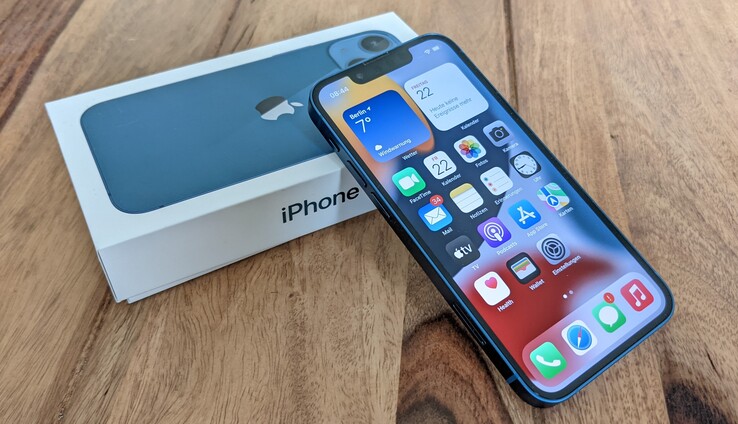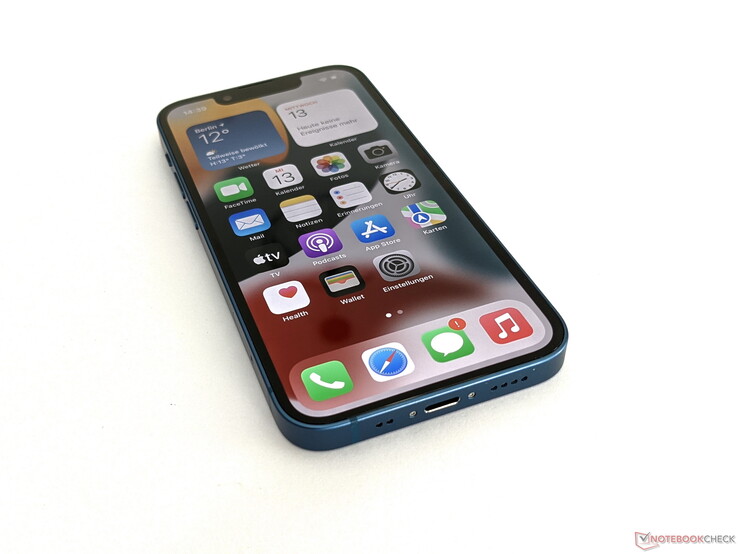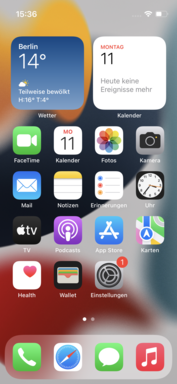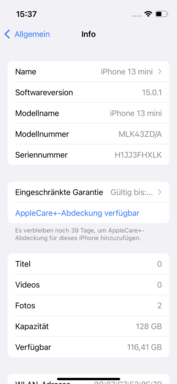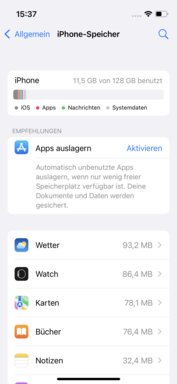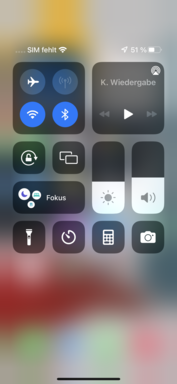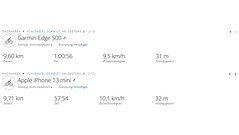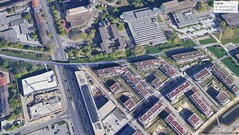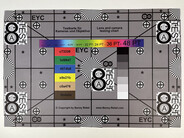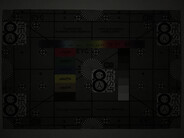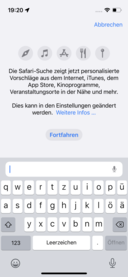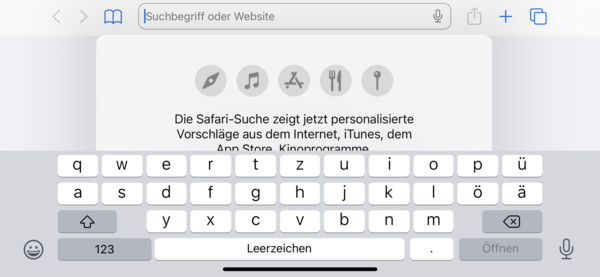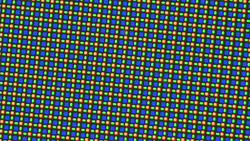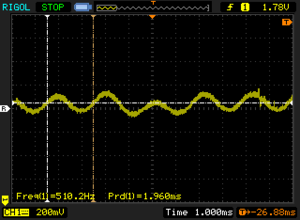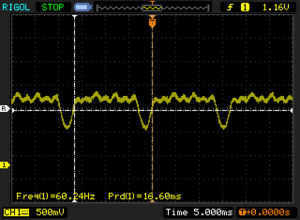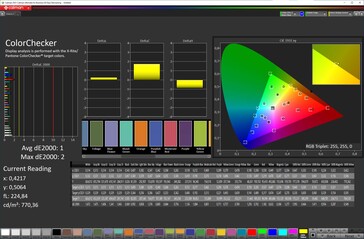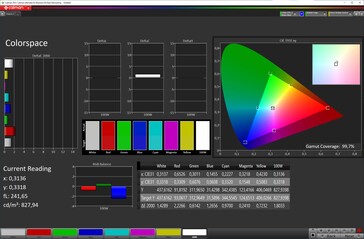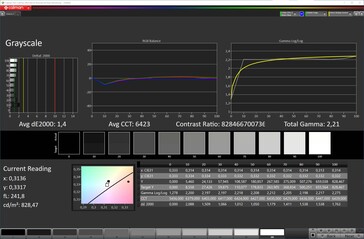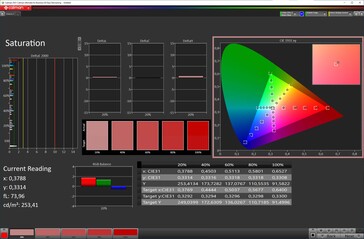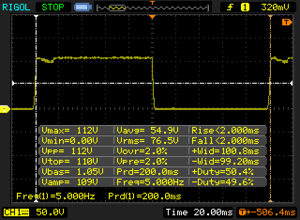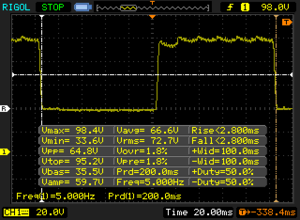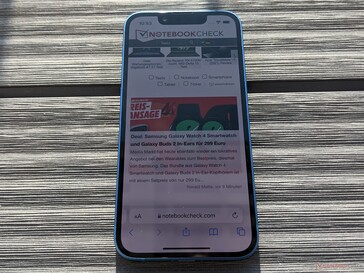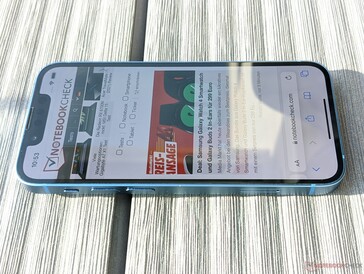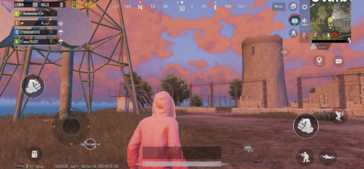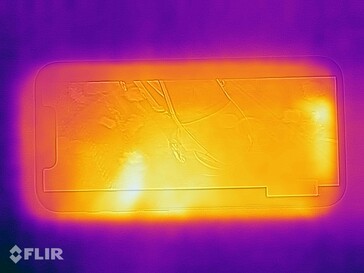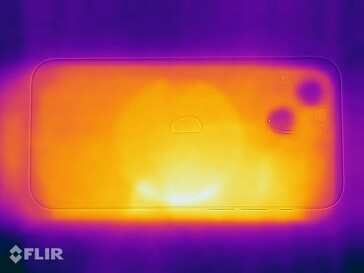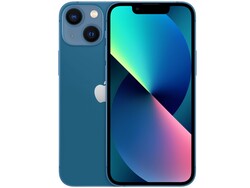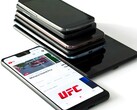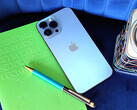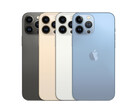Apple iPhone 13 mini in review: Powerful and ultracompact
The display size of just 5.4 inches alone makes the Apple iPhone 13 mini pretty much unrivaled. If you also consider its performance, only the iPhone 12 mini predecessor can come close to the small powerhouse. With Apple's A15 Bionic chip, the iPhone 13 mini is an extremely powerful smartphone that doesn't need to shy away from its bigger siblings.
With 4 GB of RAM and 128 GB of internal storage, our test model is available from Apple for $729. It also comes with a slightly smaller notch and an increased battery capacity. We will take a look at other new features, as well as traits inherited from the predecessor, below.
Possible contenders in comparison
Rating | Date | Model | Weight | Drive | Size | Resolution | Price |
|---|---|---|---|---|---|---|---|
| 89.8 % v7 (old) | 10 / 2021 | Apple iPhone 13 mini A15, A15 GPU 4-Core | 140 g | 128 GB NVMe | 5.40" | 2340x1080 | |
| 89.9 % v7 (old) | 12 / 2020 | Apple iPhone 12 mini A14, A14 Bionic GPU | 133 g | 128 GB NVMe | 5.40" | 2340x1080 | |
| 84.6 % v7 (old) | 10 / 2020 | Google Pixel 5 SD 765G, Adreno 620 | 151 g | 128 GB UFS 2.1 Flash | 6.00" | 2340x1080 | |
| 85.9 % v7 (old) | 06 / 2021 | Asus ZenFone 8 SD 888 5G, Adreno 660 | 169 g | 256 GB UFS 3.1 Flash | 5.92" | 2400x1080 | |
| 87.1 % v7 (old) | 10 / 2021 | Sony Xperia 5 III SD 888 5G, Adreno 660 | 168 g | 128 GB UFS 3.0 Flash | 6.10" | 2520x1080 |
Case - Compact and lightweight smartphone with IP68
Apple has left the design introduced with the iPhone 12 mini unchanged, meaning that the iPhone 13 mini also has an aluminum frame as well as front and back sides made of ceramic glass. The build quality is very good, and there are no uneven material transitions. Furthermore, the case is IP68 certified and, according to Apple, water-resistant for 30 minutes at a depth of up to six meters.
In direct comparison with the predecessor, the camera lenses of the iPhone 13 mini are now arranged diagonally instead of vertically, and the notch is slightly smaller. In addition, the weight has increased from 133 to 140 grams, which still makes the compact Apple phone very light. This is also true in comparison with the Android competition in our test field, with the iPhone 13 mini being the smallest device here.
Connectivity - More storage space in the small iPhone
The iPhone 13 mini has 4 GB of RAM in every configuration variant. Now, the internal storage starts at 128 GB in the base version, with the options of 256 GB (+$100) and 512 GB (+$300) being available as well. There is no microSD slot. Furthermore, the SIM slot can only accommodate one nano SIM card, but a dual-SIM mode is possible via an eSIM. VoLTE and VoWLAN are also supported.
Once again, Apple opts for a Lightning port as the only connection, which only works at USB 2.0 speeds but offers a broad compatibility with other Apple devices.
Software - Apple is still Apple
The iPhone 13 mini runs the latest iOS 15, which only brings a few changes for Apple veterans. The emphasis is on the interaction with other people via FaceTime as well as on Focus mode, which is meant to prevent users from getting distracted when trying to concentrate on work. We used iOS 15.0.2 for the rest of the tests.
The Maps and Weather apps have also been improved, and it's now possible to interact with text through photos. For example, phone numbers or addresses can be stored directly from a document. The following link describes all the changes found in iOS 15: https://www.apple.com/ios/ios-15/features/
Communication and GNSS - Fast positioning, but mediocre Wi-Fi
The compact iPhone can establish mobile connections over GSM, 3G, LTE, and 5G, including Sub6-5G. However, mmWave is not available. Global usage should be possible without issues thanks to the wide range of bands covered. Download rates of up to 1.2 Gb/s and upload rates of up to 225 Mb/s are possible via LTE Cat.18.
At close ranges, the iPhone 13 mini can establish connections via Bluetooth 5.0, NFC, and Wi-Fi 6. In combination with our Netgear Nighthawk AX12 reference router, we achieve rather mediocre speeds of 405 Mb/s for sending data and 620 Mb/s for receiving data.
| Networking | |
| iperf3 transmit AX12 | |
| Asus ZenFone 8 | |
| Apple iPhone 12 mini | |
| Sony Xperia 5 III | |
| Google Pixel 5 | |
| Apple iPhone 13 mini | |
| iperf3 receive AX12 | |
| Asus ZenFone 8 | |
| Sony Xperia 5 III | |
| Google Pixel 5 | |
| Apple iPhone 13 mini | |
| Apple iPhone 12 mini | |
The iPhone 13 mini can determine its location via GPS, GLONASS, BeiDou, QZSS, and Galileo. Apple doesn't specify how many bands are available, though.
On our standard bike ride, the small Apple smartphone shows a slightly lower deviation compared to our reference device, the Garmin Edge 500, which makes it well suited for navigation tasks.
Telephone and call quality - Noise reduction could be a bit better
The phone app of the iPhone 13 mini offers direct access to a numeric keypad. Additional tabs provide access to stored contacts, recent calls, and favorites. The Apple smartphone offers a very high volume during calls, but the voice quality suffers a bit as a result. Both parties can be heard very clearly in quieter environments, though. Ambient noise is also filtered out well to a certain degree, with it only impacting voice quality near very busy streets, for example.
Cameras - Strong image quality
Like in the iPhone 12 mini, Apple has once again installed two 12 MP camera sensors on the back of the iPhone 13 mini. However, they aren't identical to the sensors in the predecessor, since they capture more light now. Our sample close-up also looks a bit sharper, and colors appear natural as well. The chosen contrast mode is also decisive here, as it automatically creates warmer, cooler, or softer colors.
Panoramic shots also show many details and good colors. Minor blurriness is only revealed when you zoom in a lot. Instead of an optical zoom, only a software-based zoom is available. Although colors are still reproduced well, object edges look very blurry. Subjects captured with the ultra-wide angle lens are rich in detail, but they show a slight graininess and somewhat washed-out surfaces, especially at the edges and on dark areas. The iPhone 13 mini can visibly capture our test subject in low-light conditions, and it even reproduces some details. However, colors are low in contrast here.
Various color filters and predefined modes for different lighting situations are available for the adjustment of the image quality. Among other functions, both the focal length and the exposure can be modified. This also applies to videos, which have a similarly good image quality compared to our sample photos. Available resolutions are 720p at 30 fps, 1080p at 30 and 60 fps, as well as 4K at 24, 30, and 60 fps. The advertised feature of changing the focus point in a video is also available in the iPhone 13 mini.
The front-facing camera also captures subjects with 12 MP. It produces very good pictures with many details and natural colors. Manual adjustments can be made in the same way as when using the main camera.
Image comparison
Choose a scene and navigate within the first image. One click changes the position on touchscreens. One click on the zoomed-in image opens the original in a new window. The first image shows the scaled photograph of the test device.
Close-upPanoramaUltra-wide angleZoom (5x)Low lightThe ColorChecker Passport image shows that the iPhone 13 mini's camera captures colors a bit too brightly under controlled lighting conditions. In addition, the test chart is captured very sharply, and it only shows minor weaknesses in contrast in the lower corners.
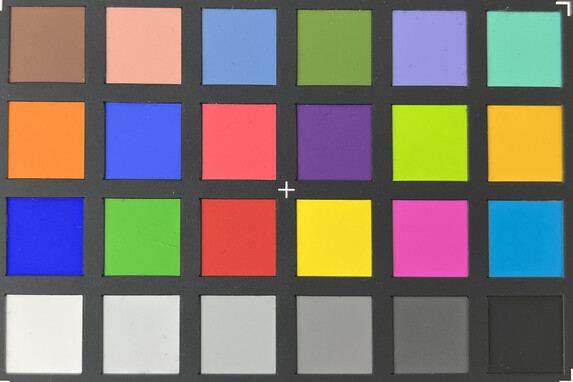
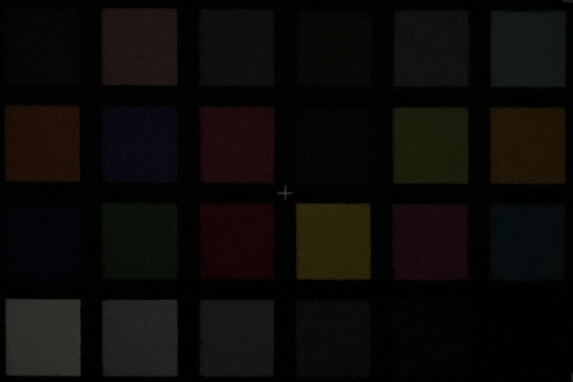
Accessories and warranty - No charger included
The iPhone 13 mini only comes with the smartphone itself and a Lightning-to-USB cable. But Apple offers a wide range of additional accessories, including MagSafe components. These can be attached magnetically to the back of the iPhone, allowing the phone to be enhanced with a card holder, for example.
Apple grants a 12-month warranty period for the iPhone 13 mini. With Apple Care+, a security package is offered as well, which covers the repair of various damages, but an additional fee is still charged.
Input devices and handling - Accurate touchscreen
The touchscreen of the iPhone 13 mini responds very reliably and accurately to touch. As a result, it's easy to use the iPhone's keyboard despite the small screen. The side buttons respond reliably as well and with a clear pressure point; they sit firmly in their respective enclosures.
Apple relies on FaceID to unlock the smartphone, and it also works in the dark thanks to the infrared sensor. The process was always reliable during our test period.
Display - Strong contrast and high brightness
The screen of the iPhone 13 mini consists of a 5.4-inch OLED panel that offers a resolution of 2340x1080 pixels. Both with and without the ambient light sensor enabled, the maximum brightness is a very good 850 cd/m². 836 cd/m² is achieved in the APL50 test, and the minimum brightness can be adjusted to 1.9 cd/m². The brightness distribution of 98% is likewise very good, allowing the iPhone 13 mini to lead our test field.
However, we measure PWM in a range between 162.3 and 510.2 Hz starting at brightness levels of 15%. Below that, only the refresh rate of 60 Hz can be detected.
| |||||||||||||||||||||||||
Brightness Distribution: 98 %
Center on Battery: 851 cd/m²
Contrast: ∞:1 (Black: 0 cd/m²)
ΔE ColorChecker Calman: 1 | ∀{0.5-29.43 Ø4.79}
ΔE Greyscale Calman: 1.4 | ∀{0.09-98 Ø5}
99.7% sRGB (Calman 2D)
Gamma: 2.21
CCT: 6423 K
| Apple iPhone 13 mini OLED, 2340x1080, 5.4" | Apple iPhone 12 mini OLED, 2340x1080, 5.4" | Google Pixel 5 OLED, 2340x1080, 6" | Asus ZenFone 8 AMOLED, 2400x1080, 5.9" | Sony Xperia 5 III OLED, 2520x1080, 6.1" | |
|---|---|---|---|---|---|
| Screen | -9% | -10% | -57% | -91% | |
| Brightness middle (cd/m²) | 851 | 623 -27% | 635 -25% | 758 -11% | 554 -35% |
| Brightness (cd/m²) | 847 | 623 -26% | 636 -25% | 759 -10% | 559 -34% |
| Brightness Distribution (%) | 98 | 98 0% | 97 -1% | 98 0% | 95 -3% |
| Black Level * (cd/m²) | |||||
| Colorchecker dE 2000 * | 1 | 1 -0% | 0.8 20% | 3.5 -250% | 2.22 -122% |
| Colorchecker dE 2000 max. * | 2 | 2.1 -5% | 2.2 -10% | 5.94 -197% | |
| Greyscale dE 2000 * | 1.4 | 1.3 7% | 1.7 -21% | 1.6 -14% | 3.6 -157% |
| Gamma | 2.21 100% | 2.21 100% | 2.23 99% | 2.23 99% | 2.193 100% |
| CCT | 6423 101% | 6258 104% | 6492 100% | 6527 100% | 7000 93% |
* ... smaller is better
Screen Flickering / PWM (Pulse-Width Modulation)
| Screen flickering / PWM detected | 510 Hz | ≤ 100 % brightness setting | |
The display backlight flickers at 510 Hz (worst case, e.g., utilizing PWM) Flickering detected at a brightness setting of 100 % and below. There should be no flickering or PWM above this brightness setting. The frequency of 510 Hz is quite high, so most users sensitive to PWM should not notice any flickering. In comparison: 53 % of all tested devices do not use PWM to dim the display. If PWM was detected, an average of 8156 (minimum: 5 - maximum: 343500) Hz was measured. | |||
The panel used in the Apple smartphone has a very high contrast ratio and an excellent black level. In addition, colors are displayed very uniformly when True Tone is deactivated. When True Tone is enabled, the system adjusts the color reproduction to the ambient light, which usually resulted in a warmer picture during our test period.
Display Response Times
| ↔ Response Time Black to White | ||
|---|---|---|
| 4 ms ... rise ↗ and fall ↘ combined | ↗ 2 ms rise | |
| ↘ 2 ms fall | ||
| The screen shows very fast response rates in our tests and should be very well suited for fast-paced gaming. In comparison, all tested devices range from 0.1 (minimum) to 240 (maximum) ms. » 15 % of all devices are better. This means that the measured response time is better than the average of all tested devices (20.3 ms). | ||
| ↔ Response Time 50% Grey to 80% Grey | ||
| 5.6 ms ... rise ↗ and fall ↘ combined | ↗ 2.8 ms rise | |
| ↘ 2.8 ms fall | ||
| The screen shows very fast response rates in our tests and should be very well suited for fast-paced gaming. In comparison, all tested devices range from 0.165 (minimum) to 636 (maximum) ms. » 16 % of all devices are better. This means that the measured response time is better than the average of all tested devices (31.7 ms). | ||
Performance - Extremely smooth system
The iPhone 13 mini is powered by an Apple A15 Bionic SoC with six cores and clock rates of up to 3.2 GHz. Compared with the iPhone 13 Pro, the 13 mini has to make do with less RAM at 4 GB and an internal GPU with four instead of five cores. In contrast to the iPhone 12 mini and its A14 Bionic chip, the CPU performance is only slightly better in Geekbench with gains of 8% (single-core) and 9% (multi-core), respectively.
Compared to the rest of the competition, the gap, which was already large, was increased even further. The new model is only somewhat weaker than the predecessor in some categories in the 3DMark tests, and depending on the specific discipline, it also has to let itself be relegated to one of the lower places by the Android smartphones.
| GFXBench 3.1 | |
| on screen Manhattan ES 3.1 Onscreen (sort by value) | |
| Apple iPhone 13 mini | |
| Apple iPhone 12 mini | |
| Google Pixel 5 | |
| Asus ZenFone 8 | |
| Sony Xperia 5 III | |
| Average Apple A15 Bionic (59.8 - 60.1, n=8) | |
| Average of class Smartphone (11 - 166, n=158, last 2 years) | |
| 1920x1080 Manhattan ES 3.1 Offscreen (sort by value) | |
| Apple iPhone 13 mini | |
| Apple iPhone 12 mini | |
| Google Pixel 5 | |
| Asus ZenFone 8 | |
| Sony Xperia 5 III | |
| Average Apple A15 Bionic (60 - 172.4, n=8) | |
| Average of class Smartphone (8.4 - 413, n=157, last 2 years) | |
| Basemark GPU 1.2 | |
| Metal Medium Native (sort by value) | |
| Apple iPhone 13 mini | |
| Average Apple A15 Bionic (155.4 - 167.9, n=3) | |
| Average of class Smartphone (152.9 - 245, n=3, last 2 years) | |
| 1920x1080 Metal Medium Offscreen (sort by value) | |
| Apple iPhone 13 mini | |
| Average Apple A15 Bionic (203 - 220, n=3) | |
| Average of class Smartphone (251 - 319, n=3, last 2 years) | |
The iPhone 13 mini is also better than the predecessor when it comes to the browser benchmarks, but the differences are significantly larger at times in this regard. As a result, the small Apple smartphone can lead our test field. In everyday use, these rates are reflected in an extremely smooth browsing experience and media content that is quickly available on websites.
| Jetstream 2 - 2.0 Total Score | |
| Average Apple A15 Bionic (173.5 - 189.9, n=8) | |
| Apple iPhone 13 mini (Safari 15) | |
| Apple iPhone 12 mini (Safari Mobile 14) | |
| Average of class Smartphone (23.8 - 387, n=155, last 2 years) | |
| Sony Xperia 5 III (Chrome93) | |
| Google Pixel 5 (Chrome 86.0.4240.110) | |
| JetStream 1.1 - Total Score | |
| Average Apple A15 Bionic (383 - 414, n=6) | |
| Apple iPhone 13 mini (Safari 15) | |
| Apple iPhone 12 mini (Safari Mobile 14) | |
| Sony Xperia 5 III (Chrome93) | |
| Asus ZenFone 8 (Chrome 90) | |
| Google Pixel 5 (Chrome 86.0.4240.110) | |
| Speedometer 2.0 - Result 2.0 | |
| Average Apple A15 Bionic (228 - 347, n=8) | |
| Apple iPhone 13 mini (Safari 15) | |
| Average of class Smartphone (15.2 - 643, n=132, last 2 years) | |
| Apple iPhone 12 mini (Safari Mobile 14) | |
| Google Pixel 5 (Chrome 86.0.4240.110) | |
| WebXPRT 3 - Overall | |
| Average Apple A15 Bionic (219 - 279, n=8) | |
| Apple iPhone 13 mini (Safari 15) | |
| Apple iPhone 12 mini (Safari Mobile 14) | |
| Average of class Smartphone (38 - 380, n=41, last 2 years) | |
| Asus ZenFone 8 (Chrome 90) | |
| Google Pixel 5 (Chrome 86.0.4240.110) | |
| Octane V2 - Total Score | |
| Average Apple A15 Bionic (57143 - 65969, n=8) | |
| Apple iPhone 13 mini (Safari 15) | |
| Apple iPhone 12 mini (Safari Mobile 14) | |
| Average of class Smartphone (2228 - 121337, n=201, last 2 years) | |
| Sony Xperia 5 III (Chrome93) | |
| Asus ZenFone 8 (Chrome 90) | |
| Google Pixel 5 (Chrome 86.0.4240.110) | |
| Mozilla Kraken 1.1 - Total | |
| Google Pixel 5 (Chrome 86.0.4240.110) | |
| Asus ZenFone 8 (Chrome 90) | |
| Average of class Smartphone (257 - 28190, n=156, last 2 years) | |
| Sony Xperia 5 III (Chrome93) | |
| Apple iPhone 12 mini (Safari Mobile 14) | |
| Average Apple A15 Bionic (414 - 507, n=8) | |
| Apple iPhone 13 mini | |
* ... smaller is better
Games - Gaming at a stable FPS is no issue
The iPhone 13 mini can run recent and demanding games smoothly. The titles that we tested with Gamebench ran smoothly even at high detail levels, and they always showed stable frame rates. Controlling games using the touchscreen worked without issues as well. However, some control elements are very small due to the limited display size. This makes it difficult to activate them or select them using your finger.
Emissions - The iPhone 13 mini barely heats up
Temperature
According to our measurements, the surfaces of the iPhone 13 mini heat up to 34.9 °C (~95 °F) under load. This only makes the smartphone feel warm to the touch, and it can be used without any issues at all times. However, Apple's compact smartphone only achieves a moderate stability score of 64.8% and 73.1% in the demanding 3DMark Wildlife stress tests. However, since this is an extraordinary load scenario, performance drops under continuous load are not to be expected.
(+) The maximum temperature on the upper side is 34.6 °C / 94 F, compared to the average of 35.2 °C / 95 F, ranging from 21.9 to 247 °C for the class Smartphone.
(+) The bottom heats up to a maximum of 34.9 °C / 95 F, compared to the average of 34 °C / 93 F
(±) In idle usage, the average temperature for the upper side is 32 °C / 90 F, compared to the device average of 32.9 °C / 91 F.
3DMark Wild Life stress test
Speakers
The speakers in the iPhone 13 mini offer a relatively high volume and a sound spectrum characterized by higher tones. This makes them well suited for reproducing voice content, but headphones or external speakers are preferable for music or similar complex media.
Compared with the iPhone 12 mini, there's a slight improvement in sound range, but also a slightly lower maximum volume.
Apple iPhone 13 mini audio analysis
(+) | speakers can play relatively loud (87.7 dB)
Bass 100 - 315 Hz
(-) | nearly no bass - on average 22.3% lower than median
(±) | linearity of bass is average (11.3% delta to prev. frequency)
Mids 400 - 2000 Hz
(±) | higher mids - on average 5.4% higher than median
(+) | mids are linear (5% delta to prev. frequency)
Highs 2 - 16 kHz
(±) | higher highs - on average 6.8% higher than median
(+) | highs are linear (3.3% delta to prev. frequency)
Overall 100 - 16.000 Hz
(±) | linearity of overall sound is average (17.9% difference to median)
Compared to same class
» 15% of all tested devices in this class were better, 8% similar, 77% worse
» The best had a delta of 11%, average was 35%, worst was 134%
Compared to all devices tested
» 36% of all tested devices were better, 8% similar, 56% worse
» The best had a delta of 4%, average was 24%, worst was 134%
Google Pixel 5 audio analysis
(+) | speakers can play relatively loud (91.9 dB)
Bass 100 - 315 Hz
(-) | nearly no bass - on average 20.6% lower than median
(+) | bass is linear (6.4% delta to prev. frequency)
Mids 400 - 2000 Hz
(±) | higher mids - on average 7.4% higher than median
(±) | linearity of mids is average (7.4% delta to prev. frequency)
Highs 2 - 16 kHz
(±) | higher highs - on average 7.2% higher than median
(+) | highs are linear (5% delta to prev. frequency)
Overall 100 - 16.000 Hz
(±) | linearity of overall sound is average (19.8% difference to median)
Compared to same class
» 30% of all tested devices in this class were better, 8% similar, 62% worse
» The best had a delta of 11%, average was 35%, worst was 134%
Compared to all devices tested
» 49% of all tested devices were better, 7% similar, 44% worse
» The best had a delta of 4%, average was 24%, worst was 134%
Apple iPhone 12 mini audio analysis
(+) | speakers can play relatively loud (90.3 dB)
Bass 100 - 315 Hz
(-) | nearly no bass - on average 22.9% lower than median
(±) | linearity of bass is average (7.2% delta to prev. frequency)
Mids 400 - 2000 Hz
(±) | reduced mids - on average 7.7% lower than median
(+) | mids are linear (5.1% delta to prev. frequency)
Highs 2 - 16 kHz
(±) | higher highs - on average 6.9% higher than median
(+) | highs are linear (2.6% delta to prev. frequency)
Overall 100 - 16.000 Hz
(±) | linearity of overall sound is average (18.9% difference to median)
Compared to same class
» 22% of all tested devices in this class were better, 10% similar, 68% worse
» The best had a delta of 11%, average was 35%, worst was 134%
Compared to all devices tested
» 43% of all tested devices were better, 8% similar, 49% worse
» The best had a delta of 4%, average was 24%, worst was 134%
Battery life - Apple's smallest device has a lot of endurance
Energy consumption
With a minimum idle power consumption of 0.57 watts and a maximum power consumption of 3.56 watts under load, the iPhone 13 mini is one of the most frugal smartphones in our test field. Only the Google Pixel 5 has a lower average power consumption.
A charger is not included in the box.
| Off / Standby | |
| Idle | |
| Load |
|
Key:
min: | |
| Apple iPhone 13 mini 2406 mAh | Apple iPhone 12 mini 2226 mAh | Google Pixel 5 4080 mAh | Asus ZenFone 8 4000 mAh | Sony Xperia 5 III 4500 mAh | Average Apple A15 Bionic | Average of class Smartphone | |
|---|---|---|---|---|---|---|---|
| Power Consumption | -4% | 7% | -32% | -149% | -47% | -90% | |
| Idle Minimum * (Watt) | 0.57 | 0.62 -9% | 0.69 -21% | 0.82 -44% | 1.8 -216% | 0.66 ? -16% | 0.853 ? -50% |
| Idle Average * (Watt) | 1.38 | 1.18 14% | 0.82 41% | 1.1 20% | 2.6 -88% | 1.303 ? 6% | 1.43 ? -4% |
| Idle Maximum * (Watt) | 1.41 | 1.21 14% | 0.85 40% | 1.16 18% | 3.1 -120% | 1.748 ? -24% | 1.609 ? -14% |
| Load Average * (Watt) | 2.65 | 2.1 21% | 2.73 -3% | 4.24 -60% | 5.3 -100% | 4.85 ? -83% | 7.09 ? -168% |
| Load Maximum * (Watt) | 3.56 | 5.71 -60% | 4.4 -24% | 6.83 -92% | 11.5 -223% | 7.77 ? -118% | 11.2 ? -215% |
* ... smaller is better
Energy consumption: Geekbench (150 cd/m²)
Energy consumption: GFXBench (150 cd/m²)
Battery life
In our practical Wi-Fi test, the small Apple iPhone achieves a battery runtime of over 14 hours. This means it lasts four hours longer than the iPhone 12 mini predecessor. In comparison with the rest of our test field, this result is very good too, and it looks even better when you take the iPhone 13 mini's significantly smaller battery of 2,406 mAh into account.
The iPhone 13 mini can be fully charged in little over an hour with a 20-watt power adapter. Wireless charging is also available. MagSafe allows for charging at up to 15 watts while the Qi standard allows up to 7.5 watts.
| Apple iPhone 13 mini 2406 mAh | Apple iPhone 12 mini 2226 mAh | Google Pixel 5 4080 mAh | Asus ZenFone 8 4000 mAh | Sony Xperia 5 III 4500 mAh | |
|---|---|---|---|---|---|
| Battery runtime | -19% | 5% | -48% | -15% | |
| Reader / Idle (h) | 51.8 | 25.6 -51% | 37.4 -28% | ||
| H.264 (h) | 17.4 | 16.1 -7% | 24.4 40% | ||
| WiFi v1.3 (h) | 14.2 | 10.9 -23% | 13.5 -5% | 7.4 -48% | 12.1 -15% |
| Load (h) | 5 | 5.3 6% | 5.6 12% |
Pros
Cons
Verdict - Unrivaled for fans of compact smartphones
If you're looking for a compact high-end smartphone, there's no getting around the iPhone 13 mini. The system performance, the camera quality, and the battery life as well are unmatched by the competition in this size category. Only the Asus Zenfone 8 is similarly compact in our more recent reviews. It's also very fast, but not quite as powerful as the iPhone 13 mini, and at 5.9 inches instead of 5.4 inches, it's still a bit bigger.
The iPhone 13 mini's performance and features are beyond reproach. Nevertheless, the display is almost a bit too small.
Running apps works as usual within the Apple ecosystem, and both the operating system and apps are very smooth. Since the entry-level storage capacity has been increased to 128 GB now, storage space problems are not to be expected that quickly here, either. The 5.4-inch display is also bright and reproduces colors excellently.
Depending on the application, however, app controls might actually be too small and hard to select as a result. If this factor isn't a problem, the Apple iPhone 13 mini is the best choice for fans of compact and powerful smartphones.
Price and availability
You can get the Apple iPhone 13 mini directly from Apple for $729 (activate with carrier later) or $699 (activate today). You can also find it on Amazon and Best Buy, for example.
Apple iPhone 13 mini
- 08/31/2022 v7 (old)
Mike Wobker




